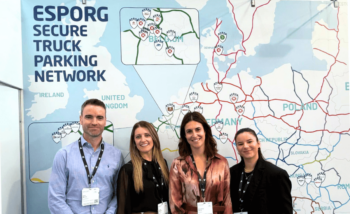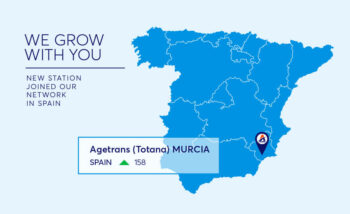

Manage costs related to Andamur fuel payments, AdBlue and secure parking. Credit payment options via bank transfer or online top-ups.
More information
Optimise management and control of your fleet with the most advanced technology. Travel in 12 European countries with a single device.
More information
Recover VAT and other taxes such as Professional Diesel, TICPE, the Macron Law and TIPP on your journeys around Europe. Service 100% tailored to your needs by an expert.
More informationPetrol stations in Europe
Countries in Europe
Customised Service
At Andamur your security and that of your fleet are our top priority. Which is why we devote much of our investment in R&D to developing products and services that make your journeys more secure.
Certified with standard ISO 27001, which endorses our ability to verify and manage risks with maximum security in all our transactions.
Customer service 100% tailored to your needs in all languages. A wide range of services designed solely and exclusively for the wellbeing of all hauliers.
Updated information about Andamur: news, novelties, launches and much more.

From June 2 to 5, Andamur took part in the Transport Logistic trade fair in Munich (World’s Leading Trade Fair for Logistics, Mobility, IT & SCM), the key international meeting point for the logistics and transport sector. This edition closed with record-breaking figures: 2,722 exhibitors from 73 countries and more than 77,000 visitors from over […]

During the months of May and June 2025, Andamur took part in several major events within the transport sector in Spain, reaffirming its commitment to the industry and strengthening relationships with professionals and organizations. 1st Almerian Transport Forum – May 27 Andamur participated as a sponsor in the first edition of the Almerian Transport Forum, […]

Andamur continues to strengthen its position as a leading provider of comprehensive solutions for professional transport with the addition of a new associated Service Area in Totana (Murcia). The new area, operated by Agetrans, is strategically located at kilometer 609 of the Mediterranean Highway (A-7), right next to the highway exit. This ensures a convenient, […]

© Copyright - Andamur
